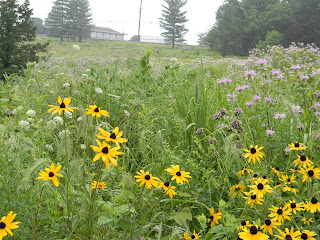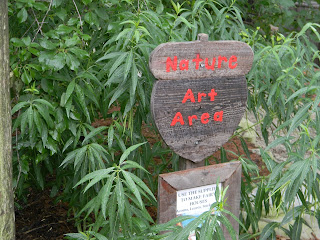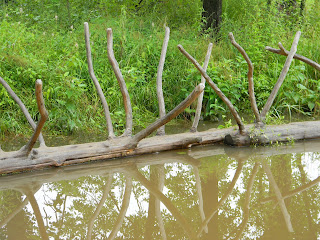I am taking a small break from the #TPTSellerChallenge to blog about my experience at the SLPS Science Academy 2015. It's a five day science and outdoor education PD hosted by my school district. They've supported the PD for the past 3 years for SLPS teachers. The school year was the first year I'd heard of it. It was one of the best decisions I could've made!
I teach in a large urban school district with many challenges. Since I've started with the district (5 years ago), there's been a huge focus on literacy. Most of our district-wide PDs are reading and writing-focused. I totally understand why. We must improve our reading and writing (and math) achievement. That's for sure. However, the focus on literacy came at the expense of other subjects, i.e. science and social studies.
I took a very calculated risk in building science into my daily schedule. from my first year. The compromise was that I'd integrate and assess a literacy standard with all of my science lessons. I've definitely reaped the benefits of my cross-curricular approach, and this experience will no doubt take my science instruction to the next level. I received so many great resources to support my growth as a science and literacy educator.
The Science Academy was held at the Dana Brown Overnight Education Center, which is a part of the Shaw Nature Reserve. It was absolutely beautiful! I think the change of scenery was exactly what I needed to focus. I learned so much in those 5 days, but in the interest of time, I am going to focus on the major take away(s) from each day.
Day 1: Project Learning Tree
Project Learning Tree (PLT) is a program that focuses on environmental literacy and education. We received a 6 workshop and curriculum resources to supplement our science program. We primarily focused on trees during our training, and I will never look at a tree the same again! Trees are excellent story tellers. It's all in their rings. We completed an activity called Tree Cookies, where we analyzed the tree's story through its rings. My brain was firing with all of the literacy connections I could make. We also did an activity that involved close looking and observation. It was interesting because our engagement activity was to draw a tree from memory. Next, we took a close look at some trees and learn about tree properties. To wrap up, we had to draw a new picture that incorporated our new learning. Again, the literacy aspects of this activity flooded my brain: observing, writing with your senses...the list goes on. Below, I've included my before and after pictures.

I was amazed at the amount of growth and improvement within a 30 minute time period. I'm looking forward to seeing this type of growth in my students this upcoming year.
Day 2: MDC - Discover Nature Schools and Experimental Design
Discover Nature Schools is a curriculum developed by the Missouri Department of Conservation. The 3-5 unit called Nature Unleashed helps students learn about ecosystem through exploration of MO ecosystems. I really like it because it focuses on native plants and wildlife. For the past 3 years, I've taught those 'generic' ecosystems. I'm looking forward to exposing my kiddos to plants and animals native to Missouri. The units include a teachers manual (with assessments...and everything's aligned to MO Learning Standards..score!), student notebooks, and these brilliantly illustrated student books. Even better, I can contact my local MDC naturalist for new student books every school year. That means my kiddos can mark up those texts. I foresee lots of writing in the margins during science this year. Close reading in science, here we come!
Experimental design has always given me LOTS of anxiety. Students are expected to be able to develop testable questions and design experiments. I've ALWAYS struggled with this, mostly because I have some helicopter teacher tendencies, particularly helping without being asked. We really dove in during the training. Susan, the Science Curriculum Specialist, did a great job making me feel more comfortable with experimental design. I definitely have more confidence (and less anxiety) that this is something that my students will be able to do this school year. My goal is to submit a science fair project this school year.
Day 3: 5E
Day three was mostly about the 5E learning cycle in science. We participated in a 5E lesson on the measurement. It was so much fun! The 5 E's stand for engage, explore, explain, expand, and evaluate. During the engage phase, the purpose is to hook your students with a short activity or demonstration. During this time, students can classify objects, free write, draw, etc. Next is the explore phase. During this time, the teacher is a facilitator, and students are provided with time to think, explore, and begin developing their own understanding through experimentation and investigation or reading authentic resources to collect information or constructing a model. After exploration, the teacher introduces formal vocabulary, explanations, new labels, concepts, and processes and skills. This the explain phase. We might consider this phase the "direct instruction" part of the 5E model. During the elaborate phase, students apply the information and new concept to a new activity. Finally, during the evaluate phase, students complete some type of assessment to show their new learning. This could be an exit ticket or quiz. You may have students evaluate their work from the explore phase and fix clarify any misconceptions or fix learning errors. Time flies when you're having fun, and time surely did fly during the lesson. Start to finish, the lesson took 90 minutes. I definitely don't have 90 minutes to dedicate to teaching one or two objectives in one day. Naturally, I would have to break up a 5E lesson over multiple days. I really enjoyed the experience and plan to use the format to develop my science lessons.

Day 4: Project WET and Shaw Nature Reserve
Project WET is organization focused on water education. It provides amazing cross curricular activities to teach kids about water and the importance of water conservation. We were supposed to complete a few activities on a float down the Meramec River. However, we've experienced A LOT of rain these past few months. The river was above stage, so it was unsafe. We still had a great day, though! Instead, we visited the children's area at Shaw Nature Reserve.
The wagon ride over
Beautiful native plants
Shaw Nature Reserve Outdoor Classroom
Latest addition: The Fairy House
The "Tree"mends bridge
Couldn't help myself! I had to cross it, lol.
The grounds were absolutely beautiful, and the children's area is the perfect amount of 'work' and 'play.' I am hoping to bring my kiddos out this upcoming school year to do some Project Learning Tree and Project WET activities. One Project WET that really stuck with me was the Sum of Parts. We basically we received a budget and piece of river front property. We could build anything we wanted on our land. We put our properties together and had an interesting conversation about run off and pollution....those poor downstream properties!
Day 5: Lesson plan presentation and science curriculum and materials
We spent the last day presenting the 5E lesson plans we created on Wednesday and Thursday. I was already on cloud nine because I'd one lots of swag throughout the week (including a tabletop pocket chart). However, I was not prepared for the goodies I received as we left....THREE QUARTERS WORTH OF SCIENCE MATERIALS AND TEACHERS MANUALS. Holy moly, I hit the motherload!
I thoroughly enjoyed myself and learned an awful lot. I will definitely keep you posted on my "science lab" this year. Have you attended any PDs that have significantly influenced your teaching?





















